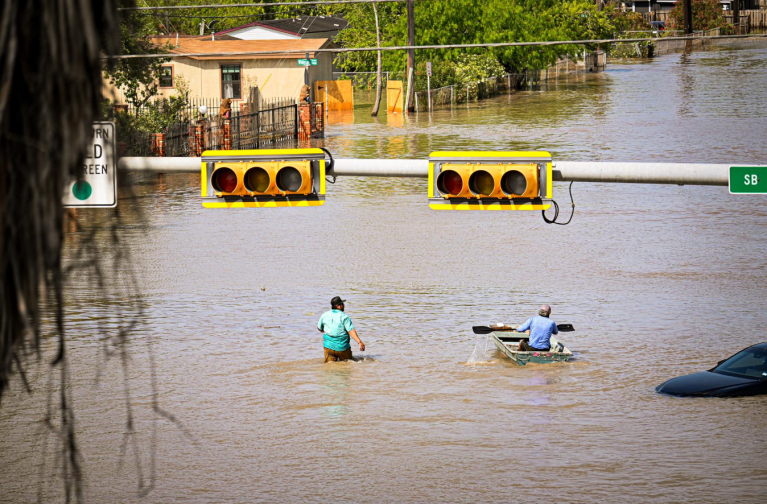Catastrophic Flooding Hits South Texas: A Record-Breaking Rainfall Event
Severe Weather Leads to Emergency Rescues
On the night of March 27, 2025, South Texas experienced an unprecedented rainfall event that has since left the region grappling with severe flooding and emergency situations. Nearly two feet of rain fell in a matter of hours, resulting in over 700 water rescues and tragically, at least four fatalities. The floodwaters primarily affected communities along the Texas-Mexico border, where hundreds were stranded in their homes and vehicles.
Impact of Rainfall on Communities
The rainfall measurements were staggering; areas just a few miles west of Harlingen recorded over 21 inches. For context, Harlingen averages around 24 inches of rain for an entire year. The deluge compacted a half-year’s worth of precipitation into a single storm, overwhelming drainage systems and flooding both roadways and residential areas. In Hidalgo County, the extent of the disaster prompted officials to declare a local disaster to facilitate cleanup and rescue efforts.
Water Rescues and Safety Measures
In border cities such as Reynosa, Mexico, reports surfaced of individuals drowning due to swift-moving waters, with nearly 700 rescues conducted by Mexican authorities. In surrounding Hidalgo County, videos captured vehicles submerged on highways, including emergency service vehicles, highlighting the extent of the flooding.
Local hospitals also faced challenges, as McAllen’s hospital reported that its first floor was flooded, necessitating the diversion of both walk-in and ambulance patients to nearby facilities. This flooding created a ripple effect of disruption across health services and essential services in the area.
The Ripple Effects of Severe Flooding
Two flash flood warnings were issued early on March 28, cautioning residents of life-threatening conditions in areas like eastern and west-central Cameron County. The devastation extended beyond immediate flooding, impacting agriculture and livestock. Many farms reported significant losses, while educational institutions across the region canceled classes due to the adverse weather. Thousands experienced power outages, further complicating the emergency response.
Residents in Distress
Residents such as Jionni Ochoa described the conditions: “The bed is the only thing dry right now, because the sofas are soaked. Everything is soaked.” People were awaiting rescue as the floodwaters reached knee-deep inside their homes, exemplifying the dramatic struggles that thousands faced.
Future Perspectives: Ongoing Risks
While the heavy rainfall has subsided, the risk of flooding persists, particularly along the Rio Grande River, where levels are predicted to rise to alarming heights in the coming days. As of the morning of March 28, the river level gauge near San Benito indicated 40.37 feet, with expectations to peak at 51.4 feet by Tuesday.
Though weather forecasts suggest a break in rainfall, the full impact of this flooding disaster will take time to assess. Emergency services are working diligently to restore normalcy, while residents are urged to remain vigilant regarding flood conditions as recovery efforts continue.
Summary
As South Texas navigates through the aftermath of this historic flooding event, towns and cities are rallying to provide assistance and support for those affected. Staying informed and cautious is paramount as river levels fluctuate, and the community begins to rebuild from this devastating natural disaster.
For real-time information regarding weather and safety updates, visit AccuWeather. Remember, safety is a priority: avoid flooded areas whenever possible and adhere to local guidance regarding emergency services.


